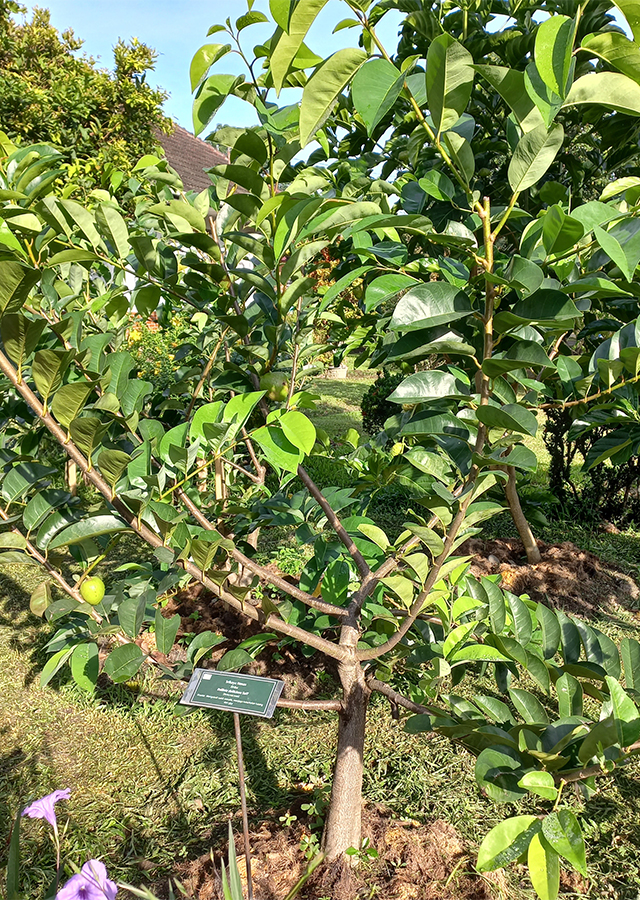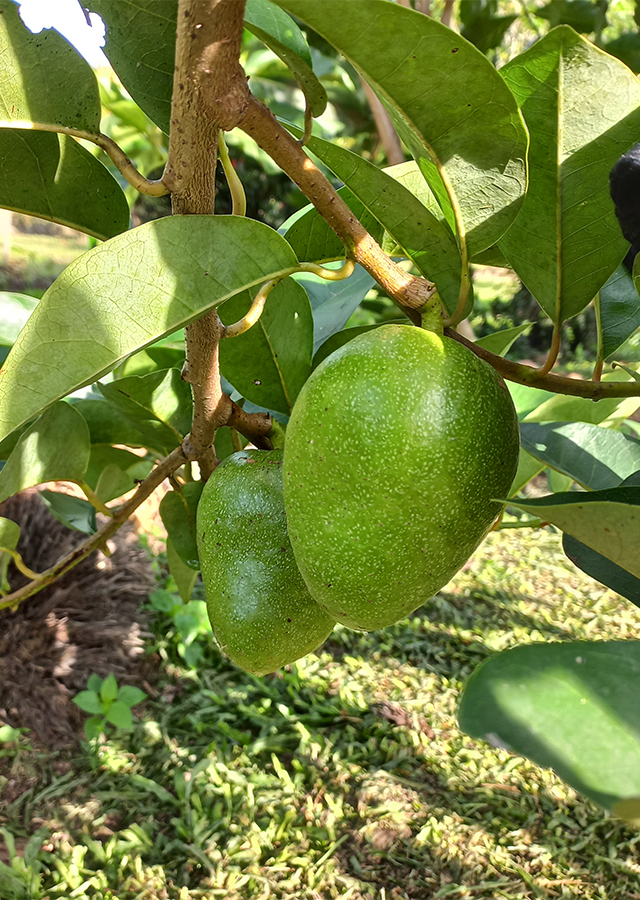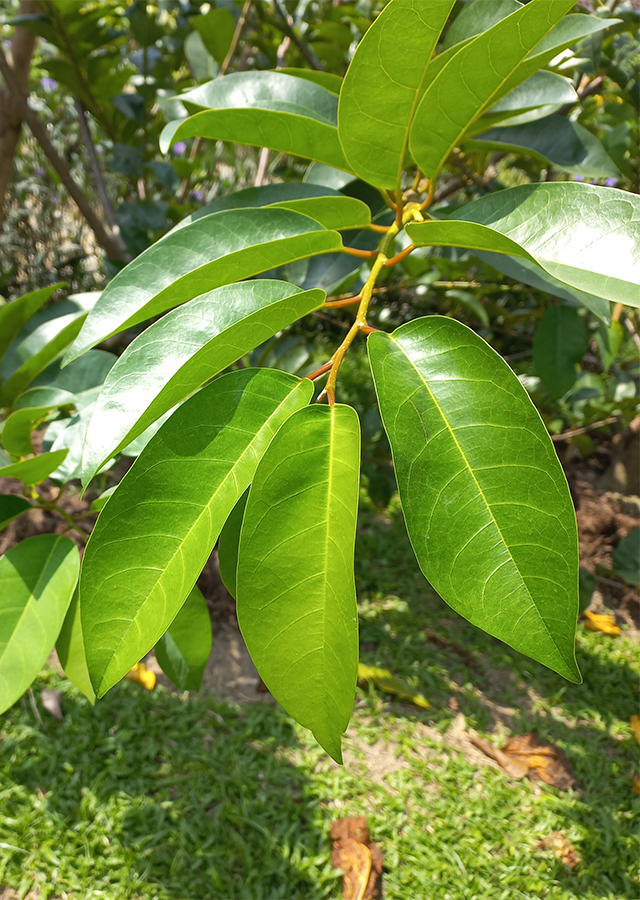Wild Sweetsop
Annona mucosa Jacq.
Annonaceae
Location in our garden
Orchard



Synonym
Annona reticulata var. mucosa (Jacq.) Willd.
Rollinia mucosa (Jacq.) Baill.
Annona biflora Sessé & Moc.
Habitus
Trees. An evergreen tree with a low, dense crown that can grow 10 - 20 m tall, the bole can be 40 - 60 cm in diameter
Part Used
Leaves
Seeds
Fruit
Growing Requirements
Full Sunshine
Habitat
Forest
Overview
Annona mucosa is a species of flowering plant in the custard-apple family, that is native to tropical South America. The tree is commonly harvested from the wild for its excellent fruit, and also supplies medicines, wood and other commodities for local use. It is said to be the most popular fruit of western Amazonia and is cultivated for this fruit in some areas of the tropics. The fruit is sold in some local markets, where they are known as Fructa da Condessa. It is said to be one of the most promising of the unusual fruits being cultivated in Australia. A few known cultivars include 'Regnard' in the Philippines (best known, introduced in 1917), 'Prolific' in Florida, and 'Liso' in Brazil. The largest is 'biriba do alto Solimoes', developed in Brazil, which can weigh up to 4 kg, making it the third largest fruit in the Annona family after junglesop and soursop.
Vernacular Names
Biriba de Pernambuco (Brazil), Schleimapfel (Deutch), Cachiman créme (French), Anona babosa (Spain), Biribana (Portuguese).
Agroecology
A plant of the hot, humid, tropical lowlands from sea level to around 600 m. Found mainly in the more open areas of secondary growth. Prefers a fertile, well-drained soil and a position in full sun. Plants are very susceptible to frost damage. A fast-growing tree. Plants can commence bearing fruit when about 4 years old.
Morphology
- Leaves - Leaves are oblong-elliptic (elongated oval shape) or ovate-oblong (elongated egg shape).
- Flowers - About 1-3 triangular flowers are produced in the leaf axil (space between the upper surface of the leaf and stem).
Cultivation
- Propagation is usually by seeds, which can remain viable for 2 years kept dry and in the dark, though air-layering and grafting are possible to preserve specific cultivars. Sow the seed in a partially shaded position in a nursery seedbed. A germination rate in excess of 50% can be expected from treated seeds. When the seedlings are 6 - 8cm tall, pot them up into individual containers.
- Layering and grafting.
Chemical Constituents
Flavonoids, 3α, 24-diacetoxy-12-oleanene, acetogenins rolliniastatin, rollinicin, N-methoxycarbonyl aporphine alkaloids, romucosine A, romucosine B, romucosine C, and romucosine, along with known alkaloid, N-methoxycarbonyl-nornuciferine, collagen, arachidonic acid, oxoaporphine alkaloids atherospermidine and liriodenine.
Traditional Medicinal Uses
- The leaves are utilized in folk medicine as a treatment against rheumatism and tumors.
- Studies have suggested insecticidal, larvicidal, antibacterial, antileishmanial, anxiolytic, sedative, anti-platelet properties.
Part Used
Reference Sources
- Fern, Ken. Useful Tropical Plants. 2022. Annona mucosa. https://tropical.theferns.info/viewtropical.php?id=Annona+mucosa. 15-12-22.
- StuartXchange. Philippine Medicinal Plant. 2022. Biriba. Annona mucosa. http://www.stuartxchange.com/Biriba. 15-12-22.
- National Parks. Flora & Fauna Web. Annona mucosa Jacq. 2022. https://www.nparks.gov.sg/florafaunaweb/flora/3/1/3104. 27-12-22.


